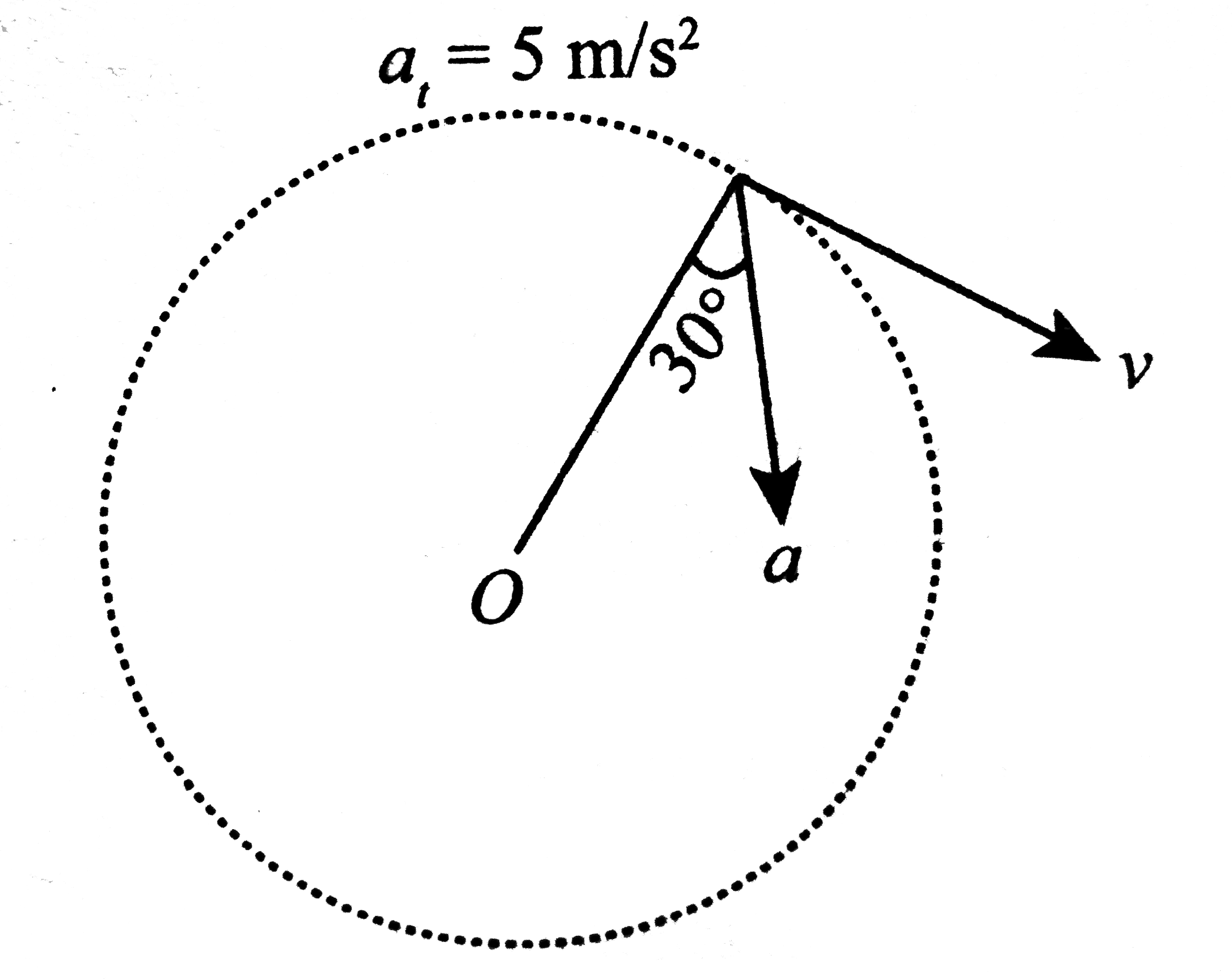A particle moves in a circle of radius 25 cm at two revolutions per sec. The acceleration of the particle in m/s2 is:
π2
8π2
4π2
2π2
The correct Answer is:c
To find the acceleration of a particle moving in a circle of radius 25 cm at a frequency of 2 revolutions per second, we can follow these steps:
1. Convert the radius from centimeters to meters:
r=25 cm=0.25 m
2. Identify the frequency of the particle:
The frequency f is given as 2 revolutions per second.
3. Calculate the angular velocity (ω):
The angular velocity can be calculated using the formula:
ω=2πf
Substituting the value of f:
ω=2π×2=4π radians per second
4. Calculate the centripetal acceleration (a):
The centripetal acceleration can be calculated using the formula:
a=ω2r
First, calculate ω2:
ω2=(4π)2=16π2
Now substitute ω2 and r into the acceleration formula:
a=16π2×0.25
Simplifying this gives:
a=4π2 m/s2
5. Final Result:
The acceleration of the particle is:
a≈39.478 m/s2(using π2≈9.87)
Final Answer:
The acceleration of the particle is approximately 39.478 m/s2.
---
r=25 cm=0.25 m
The frequency f is given as 2 revolutions per second.
The angular velocity can be calculated using the formula:
ω=2πf
Substituting the value of f:
ω=2π×2=4π radians per second
The centripetal acceleration can be calculated using the formula:
a=ω2r
First, calculate ω2:
ω2=(4π)2=16π2
Now substitute ω2 and r into the acceleration formula:
a=16π2×0.25
Simplifying this gives:
a=4π2 m/s2
The acceleration of the particle is:
a≈39.478 m/s2(using π2≈9.87)
The acceleration of the particle is approximately 39.478 m/s2.
Topper's Solved these Questions
- MOTION IN TWO DIMENSIONBOOK - A2ZCHAPTER - MOTION IN TWO DIMENSIONEXERCISE - Problems Based On Mixed Concepts
35 Videos
- MOTION IN TWO DIMENSIONBOOK - A2ZCHAPTER - MOTION IN TWO DIMENSIONEXERCISE - Assertion Reasoning
11 Videos
- MOTION IN TWO DIMENSIONBOOK - A2ZCHAPTER - MOTION IN TWO DIMENSIONEXERCISE - Relative Velocity In Two Dimensions
23 Videos
- MOCK TESTBOOK - A2ZCHAPTER - MOCK TESTEXERCISE - Motion With Constant Acceleration
15 Videos
- NEWTONS LAWS OF MOTIONBOOK - A2ZCHAPTER - NEWTONS LAWS OF MOTIONEXERCISE - Chapter Test
30 Videos
Similar Questions
Knowledge Check
A particle moves in a circle of radius 5 cm with constant speed and time period 0.2πs. The acceleration of the particle is
A25ms−2B36ms−2C5ms−2D15ms−2A particle moves in a circle of radius 5 cm with constant speed and time period 0.2π. The acceleration of the particle is:
A15m/s2B25m/s2C36m/s2D5m/s2A particle moves in a circle of radius 5 cm with constant speed and time period 0.2πs. The acceleration of the particle is
A25m/s2B36m/s2C5m/s2D15m/s2
A particle of mass m describes a circle of radius r . The centripetal acceleration of the particle is 4r2 . What will be the momentum of the particle ?
View SolutionFind the magnitude of the linear acceleration of a particle moving in a circle of radius 10 cm with uniform speed completing the circle in 4s.
View SolutionA particle moves in a circle of radius 20 cm with linear speed of 10 m/s. Find the angular velocity
View SolutionA particle moves with constant speed v along a circular path of radius r and completes the circle in time T. The acceleration of the particle is
View SolutionFigure shows the direction of the total acceleration and velocity of a particle moving clockwise in a circle radius m at an instant of time. Tangential acceleration this instant is 5m/s2. Which of the following statements is not correct?

View Solution
